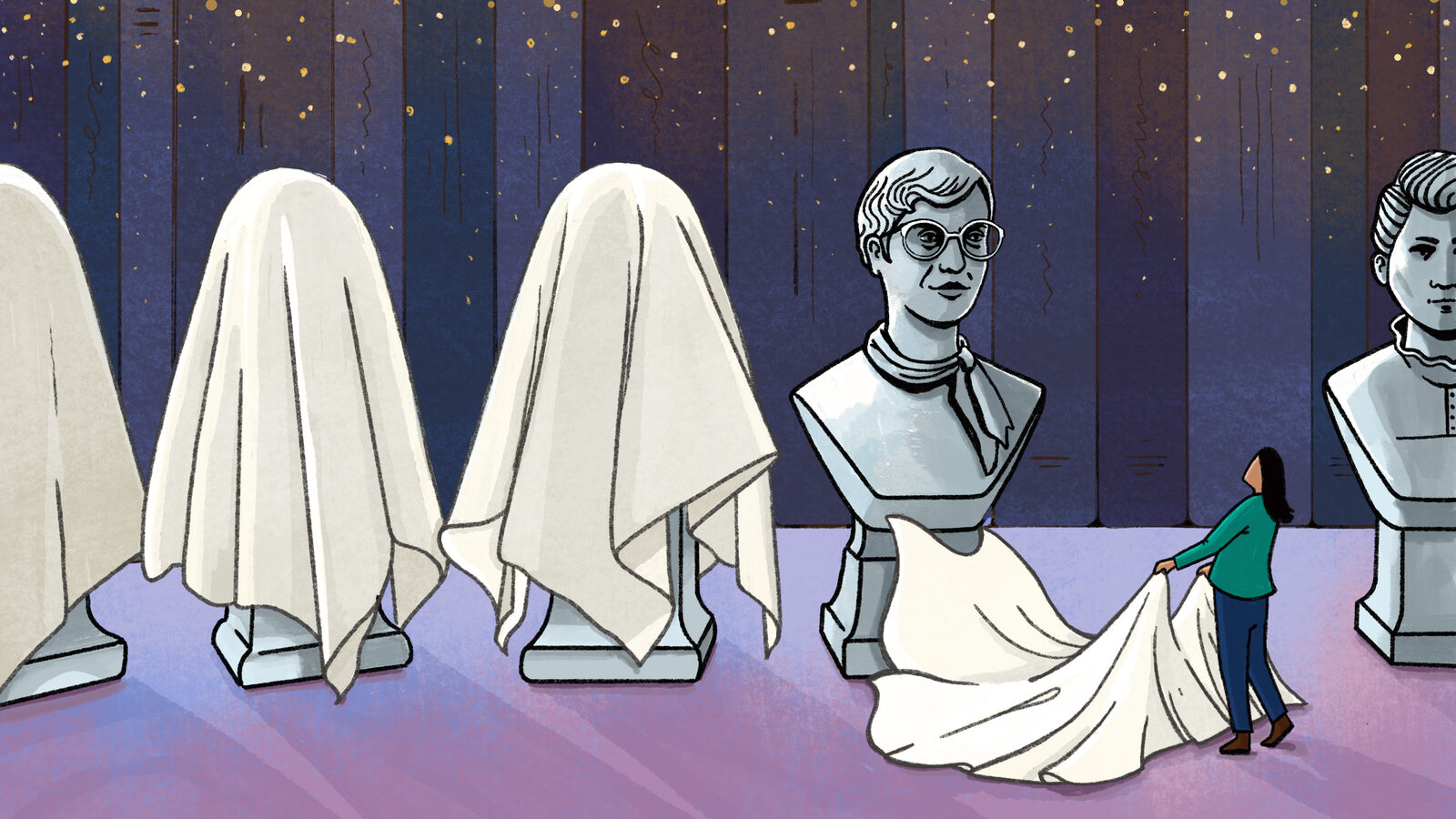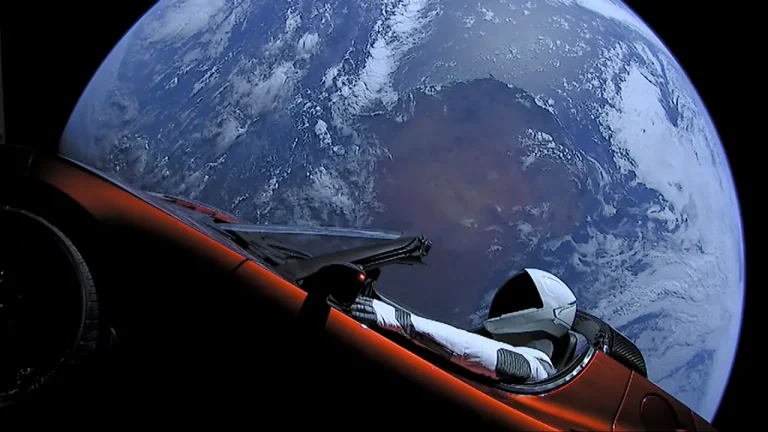
Big questions in physics and astronomy are concerned with things we cannot see: What is the nature of the invisible dark matter that dominates the universe? What is this invisible dark energy that causes the universe to expand? Are there invisible particles out there—or an entire sector of particles and forces—that we have yet to discover?
It is perhaps ironic then that, for so long, physics and astronomy have rendered invisible some of the fields’ greatest contributors.
That’s a problem Shohini Ghose, quantum physicist and professor at Wilfrid Laurier University, says she is working to correct with her new book, Her Space, Her Time.
In a little more than 200 pages, Her Space, Her Time explores seven discoveries or movements in astronomy and physics and tells the stories of the (more than seven) women scientists behind them.
These women made vital contributions to science but were often overlooked. The work of some of the women in Her Space, Her Time was ignored entirely. The work of others was accepted and used, but the women scientists weren’t acknowledged or credited with producing it. As Ghose writes, they “were eclipsed by the brighter halos of the men they worked with.”
So in her book, Ghose gives us “the thrill of seeing the invisible” by illuminating the research and lives of the women scientists whose contributions were downplayed or erased.
“Women have always played a role in unraveling the secrets of the universe. They did not need the permission of men to be curious. They fought for the right to enter the world’s top universities, to become researchers and scientists. They found ways to see the hidden laws of nature, even as they themselves remained unseen. Their work often led to Nobel Prizes being awarded to their male colleagues. Their own contributions were invariably devalued or discounted, or attributed to men… But they persisted.”
Throughout the book, Ghose—who is also one of five Chairs for Women in Science and Engineering for Canada’s Natural Sciences and Engineering Research Council—makes a deliberate choice to refer to these scientists as “women scientists.” It’s not because there should be a distinction, she writes, but because the word “scientists” is still today, despite some progress, a gendered word.
Who goes into science?
As a woman of color in the White and male-dominated field of physics, Ghose says she has been thinking about women and gender in science her whole career. But it was when she began interrogating the factors that determine “who goes into science?” as a scientific question—by speaking with experts in gender studies, psychology, education and more—that she really noticed the lack of role models for people like her.
This helped inspire her November 2019 TED Talk in India, which then led to the book proposal for Her Space, Her Time. Ghose ended up writing the manuscript during the coronavirus pandemic as a form of “self-therapy,” she says. MIT Press published the book in October.
Her Space, Her Time will likely draw comparisons to other biographies of women scientists and mathematicians like Hidden Figures by Margot Lee Shetterly and The Glass Universe by Dava Sobel. But Ghose’s book, with its unique structure and writing style, earns its own space (pun intended) in the genre.
“The piece that I wanted to bring was my perspective as a physicist myself,” Ghose says. “I wanted to write a book showing the journeys of these women as scientists, so I wanted to lead with the science and astronomy.”
Scientists first
Ghose decided to divide the book into chapters about scientific topics or discoveries and to weave in the women she wanted to feature throughout. That way, each woman’s story could be told in the context of the research she did and alongside the other women with whom she worked.
Finding these women wasn’t easy, however. Ghose knew of some from her years of work in science inclusivity and through her preparations for lectures and talks. But identifying others took more digging; ghose would scour the author lists of the most influential papers, then sift through their reference sections and even the footnotes to find the hidden contributors. “I’ve learned to think twice and dig deeper,” she says.
Some of the women scientists in the book are well known: Two-time Nobel winner Marie Skłodowska Curie is likely the most famous, though Vera Rubin has recently been rising in awareness, in part thanks to the new observatory named in her honor.
Other names might ring a bell for people who paid close attention in science class, such as astronomers Annie Jump Cannon and Henrietta Swan Leavitt or nuclear physicist Lise Meitner. But many of the women in Her Space, Her Time are largely unknown in the scientific community, much less the rest of the world.
For example, in the 1960s, hundreds of Navajo women in New Mexico were recruited to make silicon microchips for NASA’s Apollo program. While they were hired for their cheap labor, the Navajo women did work that “required skill, focus, concentration, and knowledge,” Ghose writes. And there was little room for error: They were trying to send people to the Moon.
The Navajo women excelled at their work. And yet Ghose was surprised to learn about them only while researching this book. Early in her career, Ghose happened to work near the site of their microchip plant in Shiprock. But there had been no acknowledgement of the vital work done there by hardworking, innovative Indigenous women that helped America win the Space Race.
Ghose also made a deliberate choice to include women from places other than America and Europe, where the scientific community tends to focus. “I wanted to make sure that we tell that story about women from all over the world because curiosity is not limited to one nationality or place,” she says.
One example is Elisa Frota-Pessôa, a Brazilian physicist born in 1921. With her student Neusa Margem—another woman scientist—Frota-Pessôa performed an experiment confirming a fundamental theory of weak nuclear interactions later proposed by Richard Feynman and Murray Gell-Mann. Their paper, published in Portuguese in 1950, went unnoticed, and eight years later scientists at CERN were credited with experimentally confirming the theory. “Particle physics might have advanced by a decade had the Brazilian women’s paper been known,” Ghose writes.
The scientist in the book to whom Ghose says she relates the most strongly is Bibha Chowdhuri, a Bengali physicist who, like Ghose, went to school in Kolkata, India.
Throughout her career, Chowdhuri helped discover not one but two fundamental particles, the pion and the neutrino. “I didn’t know her story when I was a kid growing up in Bengal in India,” says Ghose. “So wouldn’t it be great if future Bengali kids could all know her as an obvious household name?”
Personal touches
One of the most compelling aspects of the book is Ghose’s integration of stories from her own life as a woman in physics. The personal anecdotes provide the perspective of a woman in the field today, showing how some things have changed for the better—and how some things haven’t changed much at all.
For example, Ghose frames the first chapter, about the women of the Harvard College Observatory, in the context of a series of lectures she gave as a first-year professor. She knew she wanted to talk to students about women astronomers who helped categorize the stars. But her lessons took a new direction when she stumbled upon a phrase used as mnemonic to help students remember the letters used for star classification, OBAFGKM: “Oh be a fine girl, kiss me!”
In the book, Ghose writes about how she used her lectures to trace the story that led to that mnemonic, which she describes as “a brilliant scientific achievement by a woman, building on two decades of work by women, most of it funded by women, turned into a ridiculous request to all women.” In the class, she had her students propose a new mnemonic for the classification system. (To find out the winning alternative, you’ll have to read the book!)
Later, Ghose recounts how she withdrew a paper from an anthology after she was told she was invited to contribute only to add “diversity.” This was an ethical stand inspired by Margaret Burbidge, an astronomer who co-authored the seminal paper on stellar nucleosynthesis and later famously turned down an award that honored specifically women astronomers.
Many of the scientists in the book were the sole women in their classrooms and laboratories, an experience to which Ghose relates. She writes that she never had a woman teach any of her physics courses; she even recalls a professor who greeted the class, “Good morning, gentlemen!”
As Ghose writes in Her Space, Her Time, “…this objective field is full of very subjective human bias.”
Not just a women’s problem
The book assumes some basic knowledge of astronomy and physics concepts. But for readers who don’t have a deep understanding of the science, Ghose briefly and deftly explains scientific and technical processes so that non-expert readers can gain the necessary context.
Some readers might immediately categorize a book about women scientists to be for… well, women scientists. Ghose pushes back against this; she notices that the lack of women in science is often dismissed as a women’s issue. “Fix the women not the field, they generally seemed to advocate,” she writes in Her Space, Her Time.
“In fact, it’s quite the opposite,” she says. “It’s not like we created a problem for ourselves.”
While she hopes that women do read the book and come away inspired by their foremothers in the field, Ghose also knows that many women are already aware of—and can likely relate to—the challenges and discrimination it describes. So, she hopes her book will also be read by “readers who would typically not want to engage with this kind of material.” In particular, she says she thinks students and early-career people in science-adjacent jobs—not just scientists—would benefit from learning about these unheralded women who shaped the fields in which they work.
Even further, Ghose says she hopes that men already established in science will read it, to learn more about the women behind the research and to better understand how their contributions are frequently eclipsed or ignored. For women scientists to start getting deserved recognition, she says, professors and textbooks must talk about them. Her Space, Her Time provides a digestible, informative starting point for making these scientists visible.
After all, says Ghose, “It’s not just a women’s problem.
“I think the only way to really get to a more equitable and just community is if we all engage with this.”
This article is dedicated to Mike Perricone, longtime Symmetry book reviewer, who passed away this month.







